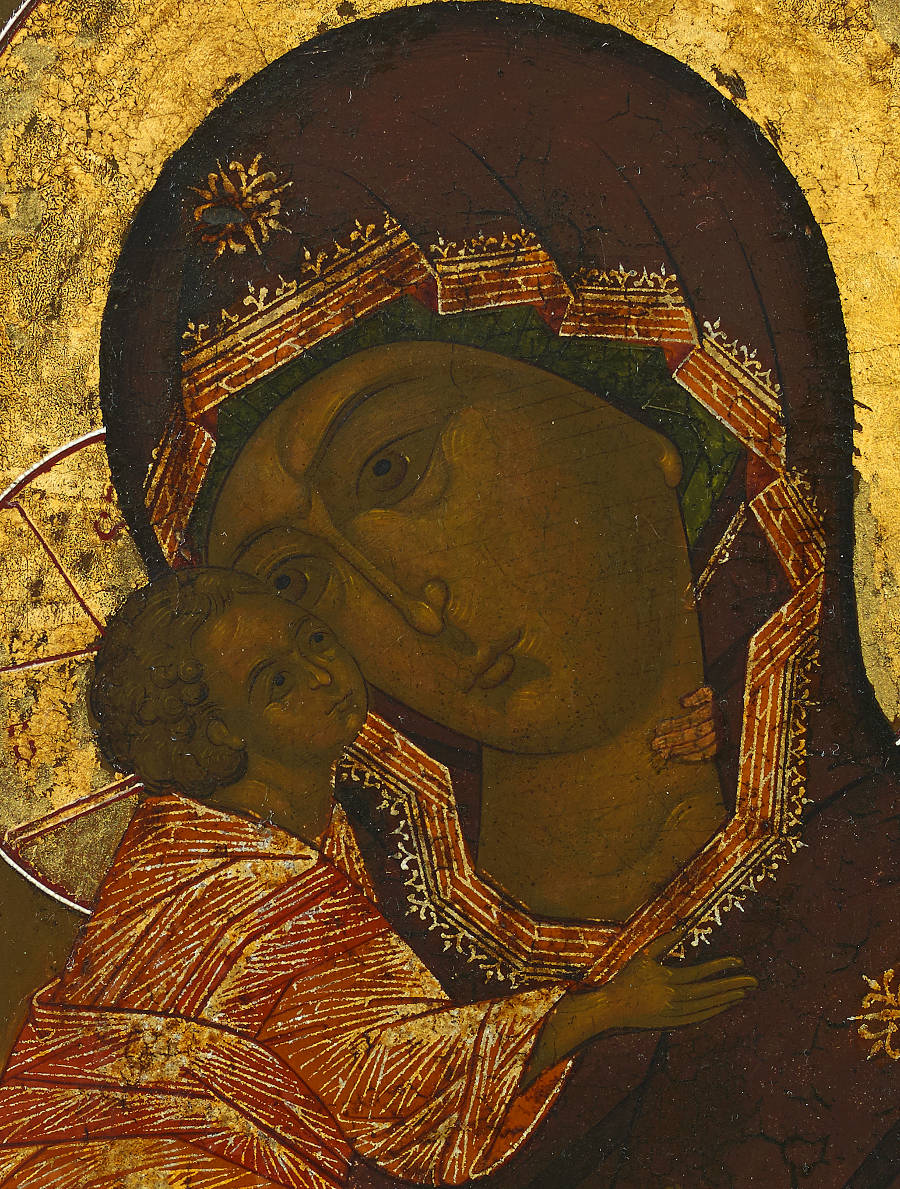 Exhibitions Archive
Exhibitions Archive
 Exhibitions Archive
Exhibitions Archive

AZ17. Virgin of Vladimir
Russian, 19th century
Panel: 30.8 x 26.2 cm![hideselects= [On] header =[Convert size] body = [Click here to show the size in inches] Click here to convert metric size to imperial](images/inches.gif)
Inscription: Greek: ΜΡ ΘΥ Mother of God; and IC XC Jesus Christ.
Provenance: Private Collection in Germany
Feast Days: The icon of the Virgin of Vladimir has three feast days: 3rd June, 6th July and 13th September when the Virgin of Vladimir protected Russia from invasion on these occasions


No. 17. Detail
"Vladimirskaya" The composition follows that of the great icon painted in Constantinople in the late twelfth century and brought to Russia shortly after, since when it has been the chief palladium of the Russian state, protecting the Russian people, delivering them from enemies and performing many miracles. The Virgin's glance varies; sometimes it is down towards her son, sometimes out towards the onlooker, sometimes interiorised within herself as we see here. The composition, in the embrace of the two figures, characterises tenderness and loving-kindness (Greek Eleousa, Russian: Oumileinye).
A number of copies of the Vladimirskaya were made in Russia in the 15th and 16th centuries. Apart from the direction of the look, there is little or no variation in either the colour scheme or the composition. The emotional tone, however, can vary considerably and is achieved through the subtlest alterations. In some examples, through the slightly paler and warmer tonality of the ochre or the almond shaped eyes of the Virgin, the aspect of tenderness is enhanced, whereas in other examples we feel a grave and pensive mood.
According to ancient tradition, the original version was painted by St Luke who made a portrait of the Virgin during her lifetime. On seeing it, so the story goes, she said "In this image is my grace and power" and then quoted Luke's gospel ‘All generations shall call me blessed’.
Fig. 1. Virgin of Vladimir, late 12th century. Tretyakov Gallery Moscow.
The intensity and spiritual liveliness of the faces in our icon express the revival of contemplative prayer in Russia as a living tradition. A recent publication tells us ‘Russia experienced a great spiritual revival in the nineteenth century. This revival was sparked by a renewal of hesychast spirituality on Mount Athos and in Romania and the publication of the Slavonic and Russian translations of the Philokalia. The Philokalia was first published in Greek in 1782, in Slavonic in 1793 and in Russian in 1877. It is a collection of spiritual and ascetic writings from the fourth to the fourteenth centuries focusing on hesychast spirituality and the practice of the Jesus prayer. The Russian spiritual revival was marked by such great spiritual figures as St Seraphim of Sarov (1759-1833) and the holy elders (starets) of Optino as well as saintly bishops1 ’.
In the seventeenth and eighteenth centuries much of icon painting had fallen under the influence of western art and had abandoned, or partly abandoned, the abstract and non-material qualities of medieval art in favour of naturalism. Parallel to the monastic spiritual revival, the nineteenth century revival of icon painting as a vehicle for mystical content rather than mere narrative is an important moment in the history of sacred art, as yet little understood by academic art historians.
The present example, No. 17, is a worthy testament to the great revival in Russia in the years before the Revolution.
Footnotes:-